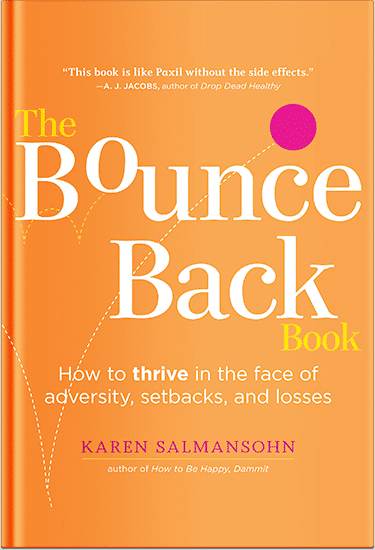 Remote work has changed the game. Home is now the office for many, and that comes with a new set of challenges. It is easy for work to bleed into everything, leaving little room to rest. That is why intentional breaks and clear routines matter more than ever.
Remote work has changed the game. Home is now the office for many, and that comes with a new set of challenges. It is easy for work to bleed into everything, leaving little room to rest. That is why intentional breaks and clear routines matter more than ever.
Real productivity is not about nonstop hustle but finding a rhythm that works. A few minutes of downtime, done right, can reset your focus and keep burnout at bay. Balance is essential whether you work remotely, as a freelancer, or as a digital artist. It is the key to staying sharp, creative, and grounded in today’s always-on world.
Micro-Moments of Fun: The Role of Light Digital Downtime
Taking real breaks can feel like a luxury in a world where work happens from laptops and meetings ping from anywhere.
However, short, intentional pauses, which we will call “micro-moments of fun,” can be the secret to staying focused and sharp. These quick mental resets help clear your head, ease stress, and prevent burnout before it builds up.
Light digital downtime is one easy way to recharge. Things like a round of a casual mobile game, browsing a creative app, or exploring puzzle games do not require deep focus and could be a great stress reliever. Some people even spend a few minutes checking out top-rated slots in Canada, not for big wins, but simply to break from work mode.
It is a quick shift that offers a change of pace, as long as it is approached with moderation and boundaries.
That is the key: moderation. Time-box your breaks by setting a timer, staying mindful, and returning to work refreshed. The goal is not to escape work entirely but to reset your mental energy in a way that feels easy and enjoyable.
Select low-stakes and soothing digital hobbies to rest your brain without overtaxing it. Ultimately, a little well-timed fun goes a long way toward building better focus and a more sustainable work rhythm.
Building a Structured Day: Segmenting Tasks with Purposeful Pauses
In remote work, it is easy for the day to dissolve into a blur. That is where time blocking and the Pomodoro Technique come in. These tools help break up the day into focused work and intentional rest.
With time blocking, you carve out blocks for each task: writing, meetings, email, creative time, and, yes, breaks. Studies show that people who use time blocking can get up to 53 per cent more done by avoiding multitasking and mental clutter.
The Pomodoro Technique takes that further. It usually involves 25 minutes of deep focus and a short five-minute break. After four cycles, you take a longer pause. This rhythm boosts concentration, prevents fatigue, and smooths workflow.
Do not just fill breaks with screen time. Instead, use your short pauses for non-digital resets. Stretch at your desk, drink water, or step outside for fresh air. These simple habits reduce eye strain, improve posture, and lift energy levels.
Together, these techniques create a day with built-in balance. Work blocks sharpen focus while breaks recharge your mind. Breaking up your hours turns your schedule from disorganised to deliberate. You will finish more tasks and feel less drained.
Making your day flow purposefully and aligning tasks with breaks cues your brain to focus when needed and rest firmly when required. In our always-on world, structured work and purposeful pauses are more than productivity hacks. They are sanity savers.
Setting Boundaries in a Connected World
Setting clear boundaries is essential for preserving focus and well-being in a world where work tools live on our phones and laptops. Establishing defined work hours, device limits, and technology-free zones helps build mental clarity and protects work-life balance, especially for remote and digital professionals.
Start by blocking out specific work hours and honouring them. Know when to log off, and keep devices out of your personal spaces, like bedrooms or during meals. Creating tech-free zones in your home invites real rest, deeper focus, and better sleep.
Tools like focus apps, site blockers, and digital calendars can reinforce these boundaries. Features like Apple’s Screen Time or Android’s Digital Wellbeing let you track app use and set daily limits. Meanwhile, habit-building tools with reminders, timers, and gamified streaks help you stay consistent and intentional.
Separating work from downtime is not about restriction. It is about choice. Limiting screen time and planning intentional breaks helps you decompress and give yourself space to recharge. This helps avoid mental overload and supports long-term focus and creativity.
Boundaries help us navigate digital life with clarity and confidence in today’s always-on world. They create space for productivity and pause so you are in control, not your devices.
Balance Isn’t Optional—It’s Essential
In today’s connected world, balance is not a nice-to-have. It is how we stay sane, sharp, and sustainable. We can work smarter without burning out with clear boundaries, mindful breaks, and structured routines. It is not about doing less. It is about doing it better with space to rest, think, and thrive.
P.S. Before you zip off to your next Internet pit stop, check out these 2 game changers below - that could dramatically upscale your life.
1. Check Out My Book On Enjoying A Well-Lived Life: It’s called "Your To Die For Life: How to Maximize Joy and Minimize Regret Before Your Time Runs Out." Think of it as your life’s manual to cranking up the volume on joy, meaning, and connection. Learn more here.
2. Life Review Therapy - What if you could get a clear picture of where you are versus where you want to be, and find out exactly why you’re not there yet? That’s what Life Review Therapy is all about.. If you’re serious about transforming your life, let’s talk. Learn more HERE.
Think happier. Think calmer.
Think about subscribing for free weekly tools here.
No SPAM, ever! Read the Privacy Policy for more information.
One last step!
Please go to your inbox and click the confirmation link we just emailed you so you can start to get your free weekly NotSalmon Happiness Tools! Plus, you’ll immediately receive a chunklette of Karen’s bestselling Bounce Back Book!


 Remote work has changed the game. Home is now the office for many, and that comes with a new set of challenges. It is easy for work to bleed into everything, leaving little room to rest. That is why intentional breaks and clear routines matter more than ever.
Remote work has changed the game. Home is now the office for many, and that comes with a new set of challenges. It is easy for work to bleed into everything, leaving little room to rest. That is why intentional breaks and clear routines matter more than ever.